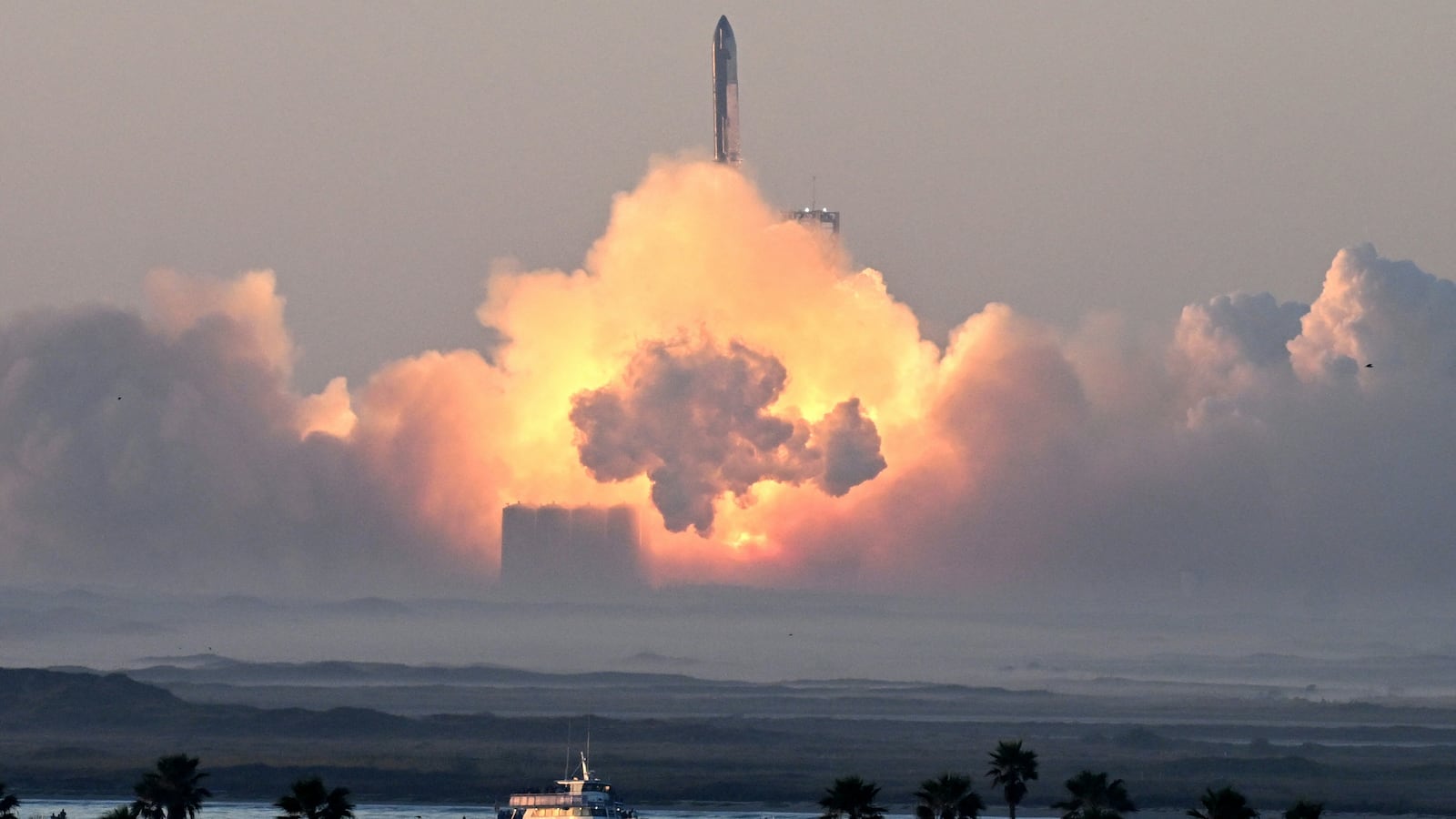SpaceX’s second test flight was cut short after the vehicle’s spacecraft blew up about 15 minutes after liftoff.
The starship rocket took off from the company’s spaceport east of Brownsville, Texas around 8 a.m. ET. The spacecraft did successfully separate from the main booster rocket, however the booster exploded shortly afterwards as it descended.
“The booster experienced a rapid unscheduled disassembly shortly after stage separation while Starship’s engines fired for several minutes on its way to space,” SpaceX shared on X, formerly known as Twitter. “With a test like this, success comes from what we learn, and today’s test will help us improve Starship’s reliability as SpaceX seeks to make life multiplanetary.”
Starship kept soaring but six minutes later its engines were shut off and it stopped sending signals back to the ground.
Soon after, the livestream hosts announced that Starship had met the same explosive fate as its booster—a “rapid unscheduled disassembly.”
“What we do believe right now is that the automated flight termination system on second stage appears to have triggered very late in the [engine] burn as we were headed downrange out over the Gulf of Mexico,” SpaceX engineer John Insprucker said as the livestream concluded.
SpaceX’s second test flight did make it further than the company’s previous attempt, which ended in an explosion seven months ago.
The separation between the booster rocket and the spacecraft was one of SpaceX’s main goals from this test flight given that did not happen during the April mission before it exploded.
Saturday’s planned flight path would have taken the spacecraft towards space and around Earth before landing in the Pacific Ocean near Hawaii.
NASA has a lot riding on SpaceX’s success and has invested $4 billion in the hope of using Starship to take astronauts to the moon’s surface as part of its Artemis III exploration program, currently scheduled for 2025.
“Congrats to the teams who made progress on today’s flight test,” NASA administrator Bill Nelson shared on X. “Spaceflight is a bold adventure demanding a can-do spirit and daring innovation. Today’s test is an opportunity to learn—then fly again. Together @NASA and @SpaceX will return humanity to the Moon, Mars & beyond.”
“Each test represents a step closer to putting the first woman on the Moon with the #Artemis III Starship human landing system. Looking forward to seeing what can be learned from this test that moves us closer to the next milestone,” Jim Free, NASA associate administrator for exploration systems development, shared on X.






